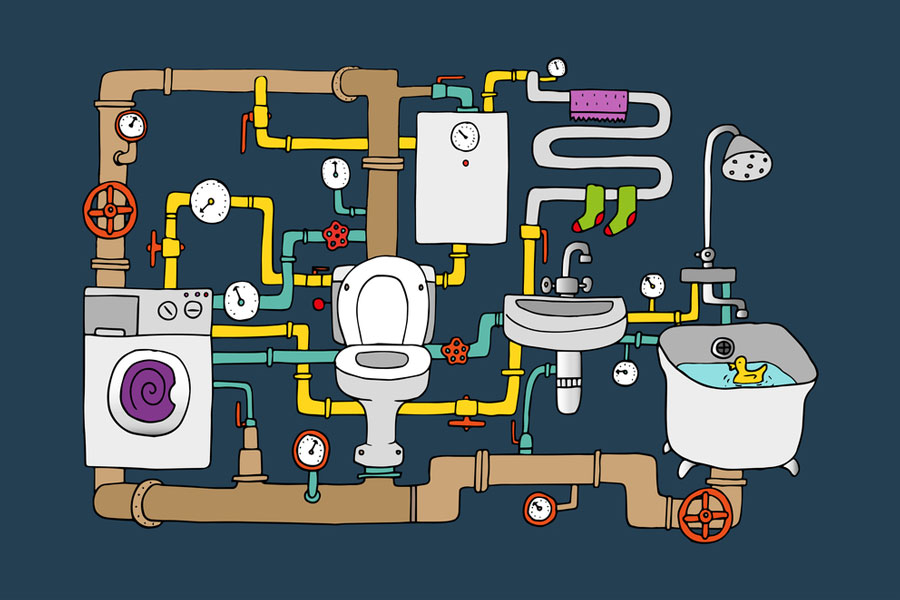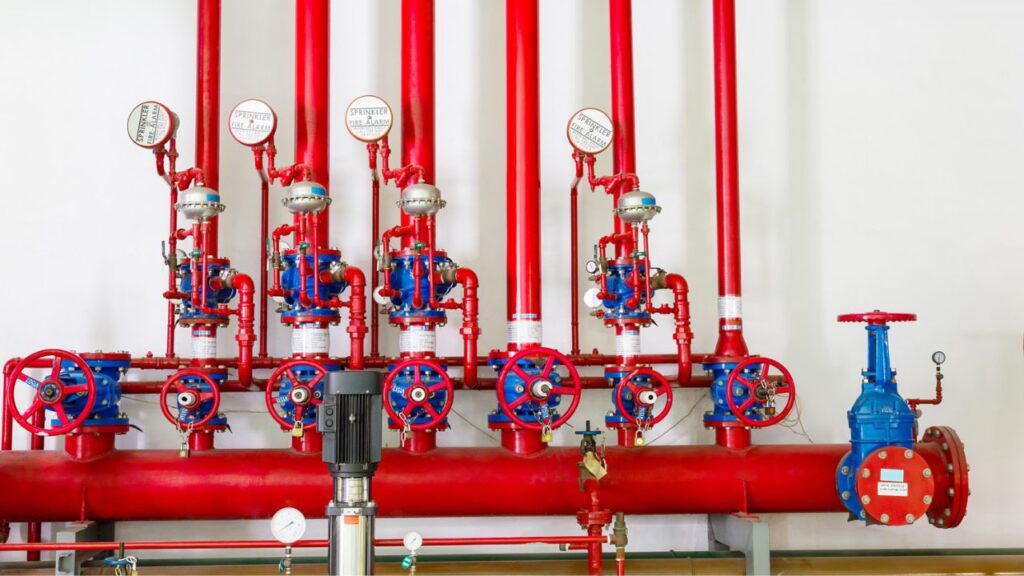Everything You Need to Know to Your Home's Plumbing System Anatomy
Everything You Need to Know to Your Home's Plumbing System Anatomy
Blog Article
In this article below you might get a bunch of exceptional material in regards to Anatomy of a House: Understanding the Components.

Recognizing how your home's plumbing system functions is vital for every single homeowner. From supplying clean water for drinking, food preparation, and showering to safely eliminating wastewater, a well-maintained plumbing system is important for your family members's health and wellness and convenience. In this extensive guide, we'll check out the intricate network that comprises your home's pipes and deal tips on maintenance, upgrades, and taking care of typical issues.
Introduction
Your home's pipes system is greater than just a network of pipes; it's a complicated system that guarantees you have access to clean water and effective wastewater removal. Understanding its parts and exactly how they collaborate can assist you protect against costly repair work and guarantee whatever runs efficiently.
Standard Components of a Pipes System
Pipelines and Tubes
At the heart of your pipes system are the pipelines and tubes that lug water throughout your home. These can be made of different materials such as copper, PVC, or PEX, each with its benefits in terms of longevity and cost-effectiveness.
Components: Sinks, Toilets, Showers, etc.
Components like sinks, bathrooms, showers, and bathtubs are where water is made use of in your house. Recognizing exactly how these fixtures link to the plumbing system helps in diagnosing problems and intending upgrades.
Shutoffs and Shut-off Factors
Shutoffs manage the circulation of water in your plumbing system. Shut-off valves are important throughout emergency situations or when you need to make repair services, enabling you to isolate parts of the system without interfering with water flow to the entire residence.
Supply Of Water System
Key Water Line
The major water line connects your home to the community water system or a personal well. It's where water enters your home and is dispersed to various components.
Water Meter and Stress Regulator
The water meter steps your water use, while a stress regulator makes certain that water flows at a risk-free pressure throughout your home's plumbing system, avoiding damage to pipelines and components.
Cold Water vs. Warm water Lines
Comprehending the distinction between cold water lines, which provide water straight from the primary, and warm water lines, which bring heated water from the hot water heater, aids in fixing and planning for upgrades.
Water drainage System
Drain Piping and Traps
Drain pipelines bring wastewater away from sinks, showers, and commodes to the sewage system or septic tank. Traps protect against sewage system gases from entering your home and also catch particles that might trigger blockages.
Air flow Pipelines
Air flow pipelines allow air into the drainage system, preventing suction that could reduce drain and cause catches to empty. Proper ventilation is important for preserving the integrity of your pipes system.
Significance of Proper Drain
Making certain appropriate drain protects against back-ups and water damages. Consistently cleansing drains and maintaining catches can avoid costly repair services and expand the life of your pipes system.
Water Heating Unit
Kinds Of Water Heaters
Water heaters can be tankless or traditional tank-style. Tankless heaters heat water on demand, while tanks store warmed water for immediate usage.
Updating Your Plumbing System
Reasons for Updating
Updating to water-efficient components or replacing old pipelines can enhance water quality, minimize water costs, and raise the value of your home.
Modern Pipes Technologies and Their Benefits
Discover modern technologies like clever leakage detectors, water-saving toilets, and energy-efficient water heaters that can conserve money and decrease environmental influence.
Cost Considerations and ROI
Calculate the in advance costs versus lasting financial savings when considering plumbing upgrades. Many upgrades spend for themselves with decreased energy bills and less repairs.
Exactly How Water Heaters Attach to the Pipes System
Comprehending how water heaters attach to both the cold water supply and hot water distribution lines aids in diagnosing issues like insufficient hot water or leaks.
Upkeep Tips for Water Heaters
Frequently purging your water heater to eliminate debris, examining the temperature settings, and examining for leaks can extend its life expectancy and enhance power effectiveness.
Usual Plumbing Issues
Leakages and Their Causes
Leaks can occur due to maturing pipelines, loose installations, or high water stress. Attending to leakages immediately stops water damages and mold and mildew development.
Clogs and Obstructions
Obstructions in drains pipes and toilets are usually triggered by flushing non-flushable items or a buildup of oil and hair. Making use of drainpipe screens and bearing in mind what drops your drains pipes can avoid clogs.
Indicators of Pipes Issues to Watch For
Low water pressure, slow-moving drains, foul odors, or unusually high water bills are indicators of possible pipes troubles that should be attended to quickly.
Plumbing Upkeep Tips
Routine Inspections and Checks
Arrange annual pipes evaluations to catch problems early. Search for indicators of leakages, rust, or mineral buildup in taps and showerheads.
DIY Upkeep Tasks
Easy jobs like cleaning tap aerators, checking for commode leaks making use of dye tablet computers, or protecting exposed pipes in chilly climates can stop major pipes issues.
When to Call a Specialist Plumbing
Know when a plumbing concern requires specialist knowledge. Attempting intricate repair work without appropriate expertise can result in even more damages and higher repair service prices.
Tips for Decreasing Water Usage
Basic behaviors like repairing leakages without delay, taking shorter showers, and running complete lots of washing and recipes can conserve water and lower your energy costs.
Eco-Friendly Pipes Options
Consider sustainable plumbing materials like bamboo for floor covering, which is durable and eco-friendly, or recycled glass for countertops.
Emergency Readiness
Actions to Take Throughout a Plumbing Emergency situation
Know where your shut-off valves lie and just how to turn off the water system in case of a ruptured pipeline or major leakage.
Significance of Having Emergency Situation Get In Touches With Helpful
Keep call info for neighborhood plumbers or emergency solutions readily available for quick action throughout a pipes situation.
Environmental Impact and Conservation
Water-Saving Fixtures and Appliances
Mounting low-flow taps, showerheads, and commodes can significantly reduce water usage without sacrificing performance.
Do It Yourself Emergency Fixes (When Appropriate).
Short-term repairs like utilizing duct tape to patch a leaking pipe or putting a container under a leaking faucet can reduce damage until a professional plumbing gets here.
Verdict.
Comprehending the composition of your home's plumbing system empowers you to maintain it effectively, conserving time and money on fixings. By adhering to normal upkeep routines and staying educated concerning modern pipes technologies, you can guarantee your plumbing system runs efficiently for years ahead.
Understanding Your Home Plumbing System: A Comprehensive Guide
Plumbing System: The Lifeline of Your Home
At its core, the plumbing system is designed to perform two primary functions: bring fresh water into your home and remove wastewater. The system is a network of pipes, fixtures, and other components that transport water and sewage. Residential plumbing systems include potable water supply lines, drain-waste-vent (DWV) systems, and various plumbing fixtures that make water use in daily tasks possible.
Key Components:
Water Supply: This part of your plumbing system brings municipal water into your home, passing through the main water supply line. It s responsible for supplying all water needs, from drinking to bathing.
Drainage System: It carries waste and water away from your home to the sewer or septic system. This system includes all the piping within your home that leads to external sewage or septic systems.
Vent System: An essential yet often overlooked component, the vent system allows sewer gases to escape and lets air into the drainpipes, ensuring water and waste move correctly through the system.
Fixture: More Than Just Taps and Toilets
Plumbing fixtures are the most interactive parts of the plumbing system, including faucets, showers, toilets, and sinks. Each fixture is connected to the plumbing system and plays a role in either the delivery of freshwater or the disposal of waste and wastewater.
Types of Fixtures:
Faucets and Sinks: Used for washing hands, dishes, and other daily water needs. Toilets: Dispose of human waste through the sewage system. Bathtubs and Showers: Provide bathing facilities, requiring both hot and cold water supply. Water Supply: The Source of Life
The water supply system is a critical component, ensuring that potable water is available throughout your home for various uses, including drinking, cooking, and cleaning. This system consists of pipes that distribute water to different parts of the house, controlled by valves to regulate the water flow.
Types of Plumbing: Materials and Methods
Various types of plumbing systems and materials are used in residential settings, each with its advantages and applications. From copper and PVC pipes for water supply to cast iron and ABS for drainage, the choice of materials can impact the longevity and efficiency of your plumbing system.
https://intownplumbingtx.com/articles/home-plumbing-system-guide/

I ran across that blog posting about The Inner Workings of Your Home's Plumbing while surfing around the internet. Sharing is nice. Helping others is fun. Many thanks for being here. Kindly come by our website back soon.
Click Here Report this page